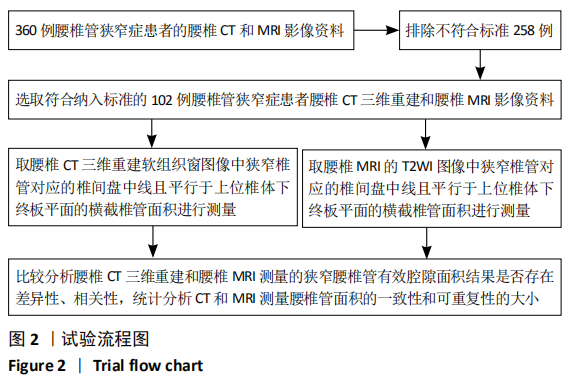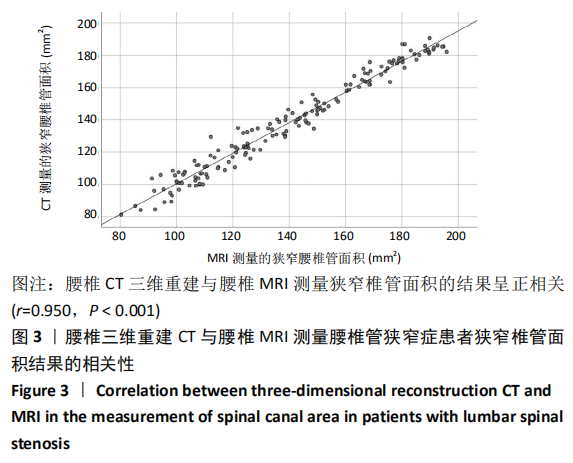[1] 张大伟,牛广明,张建功,等.腰椎管的MRI定量测量研究进展[J].内蒙古医学院学报,2005,27(2):140-145.
[2] 赵建民,马志新,秦凤印.下腰椎椎管CT图像辅助计算机测量分析[J].中华骨科杂志,1999,19(6):342.
[3] 盖青竹,张光辉,刘旭林.内切圆面积测量法在中央型腰椎管狭窄中的诊断价值[J].医学影像学杂志,2008,18(2):155-158.
[4] 韩跃军.CT图像面积测量在腰椎管狭窄症诊断中的应用效果分析[J].实用中西医结合临床,2018,18(3):109-110.
[5] 边卫国,党晓谦,汤少杰,等. 计算机辅助下腰椎CT图像自动化测量及其临床价值[J].中国脊柱脊髓杂志,2007,17(10):749-752+801.
[6] MAJIDI H, SHAFIZAD M, NIKSOLAT F, et al. Relationship Between Magnetic Resonance Imaging Findings and Clinical Symptoms in Patients with Suspected Lumbar Spinal Canal Stenosis: a Case-control Study. Acta Inform Med. 2019;27(4):229-233.
[7] 余将明,马俊,谢宁,等. 斜外侧腰椎椎间融合术间接减压治疗退行性腰椎管狭窄症的早期疗效[J]. 中华骨科杂志,2017,37(16): 972-979.
[8] LIN GX, RUI G, SHARMA S, et al. The correlation of intraoperative distraction of intervertebral disc with the postoperative canal and foramen expansion following oblique lumbar interbody fusion. Eur Spine J. 2020. doi:10.1007/s00586-020-06604-3.
[9] 丁凌志,范顺武,胡志军,等. 斜外侧腰椎椎间融合术间接减压治疗退行性腰椎管狭窄症[J]. 中华骨科杂志,2017, 37(16):965-971.
[10] 张大卫,陈涛,李国威,等. 减压和非减压治疗无神经症状椎管内占位胸腰椎骨折的对比研究[J]. 中国修复重建外科杂志,2017, 31(8):970-975.
[11] 零刚新,阮兵,古文熠.硬膜囊与椎管的面积之比的CT测量指标在椎管狭窄症的诊断价值研究[J].现代医用影像学,2016,25(2): 170-173.
[12] 张庆明,沈惠良,雍宜民.CT测量诊断腰椎管狭窄症的相关指标探讨[J].中国脊柱脊髓杂志,2007,17(6):422-425.
[13] 刘延安,杨少锋,张福占, 等.硬膜囊面积与椎管面积比值和腰椎管狭窄症的相关性分析[J].中国骨与关节损伤杂志,2017,32(1):74-75.
[14] 连平,孙荣华,杨维权,等.腰椎椎管与硬膜囊横截面积及其动态变化的实验研究[J].中华外科杂志,1995,33(3):151-154.
[15] ULLRICH CG, BINET EF, SANECKI MG, et al.Quantitative assessment of the lumbar spinal canal by computed tomography. Radiology. 1980;134(1):137‐143.
[16] BOLENDER NF, SCHÖNSTRÖM NS, SPENGLER DM. Role of computed tomography and myelography in the diagnosis of central spinal stenosis. J Bone Joint Surg Am. 1985;67(2):240‐246.
[17] 魏焕,李立森,金旭. 脊髓造影、脊髓CT和MRI对腰椎管狭窄诊断价值的比较研究[J]. 吉林医学,2010,31(7):931-933.
[18] SCHÖNSTRÖM N, LINDAHL S, WILLÉN J, et al Dynamic changes in the dimensions of the lumbar spinal canal: an experimental study in vitro. J Orthop Res. 1989;7(1):115‐121.
[19] ZHOU Z, JIN Z, ZHANG P, et al. Correlation Between Dural Sac Size in Dynamic Magnetic Resonance Imaging and Clinical Symptoms in Patients with Lumbar Spinal Stenosis. World Neurosurg. 2020;134: e866-e873.
[20] LIMTHONGKUL W, TANASANSOMBOON T, YINGSAKMONGKOL W, et al. Indirect Decompression Effect to Central Canal and Ligamentum Flavum After Extreme Lateral Lumbar Interbody Fusion and Oblique Lumbar Interbody Fusion. Spine. 2020;45(17):E1077-E1084.
[21] CHANG JE, KIM H, OH Y, et al. Correlation of the lumbar dural sac dimension with the spread of spinal anesthesia in elderly female patients: A prospective observational study. Acta Anaesthesiol Scand. 2020. doi: 10.1111/aas.13698.
[22] ZHANG B, KONG Q, YAN Y, et al. Degenerative central lumbar spinal stenosis: is endoscopic decompression through bilateral transforaminal approach sufficient? BMC Musculoskelet Disord. 2020;21(1):714.
[23] SUNGKARAT W, LAOTHAMATAS J, WORAPRUEKJARU L, et al. Lumbosacral spinal compression device with the use of a cushion back support in supine MRI. Acta Radiol. 2020:284185120951963.
[24] RISTOLAINEN L, KETTUNEN JA, DANIELSON H, et al. Magnetic resonance imaging findings of the lumbar spine, back symptoms and physical function among male adult patients with Scheuermann’s disease. J Orthop. 2020;21:69-74.
[25] LIU Y, LIU Y, HAI Y, et al. Lumbar lordosis reduction and disc bulge may correlate with multifidus muscle fatty infiltration in patients with single-segment degenerative lumbar spinal stenosis. Clin Neurol Neurosurg. 2020;189:105629.
[26] HEGGENESS M, ESSES SI. Degenerative spinal stenosis. Current Orthop. 1991;5(2):199.
[27] SCHÖNSTRÖM N. The significance of oblique cuts on CT scans of the spinal canal in terms of anatomic measurements. Spine. 1988;13(4): 435‐436.
[28] 李镒冲,李晓松.两种测量方法定量测量结果的一致性评价[J].现代预防医学,2007,34(17):3263-3266,3269.
[29] ALSALEH K, HO D, ROSAS-ARELLANO MP, et al. Radiographic assessment of degenerative lumbar spinal stenosis: is MRI superior to CT? Eur Spine J. 2017;26(2):362-367.
[30] SASANI H, SOLMAZ B, SASANI M, et al. Diagnostic Importance of Axial Loaded Magnetic Resonance Imaging in Patients with Suspected Lumbar Spinal Canal Stenosis. World Neurosurg. 2019;127:e69-e75.
[31] 卢云峰.腰椎管狭窄CT和MRI诊断对比分析[J].医药前沿, 2012(20):72-73. |









